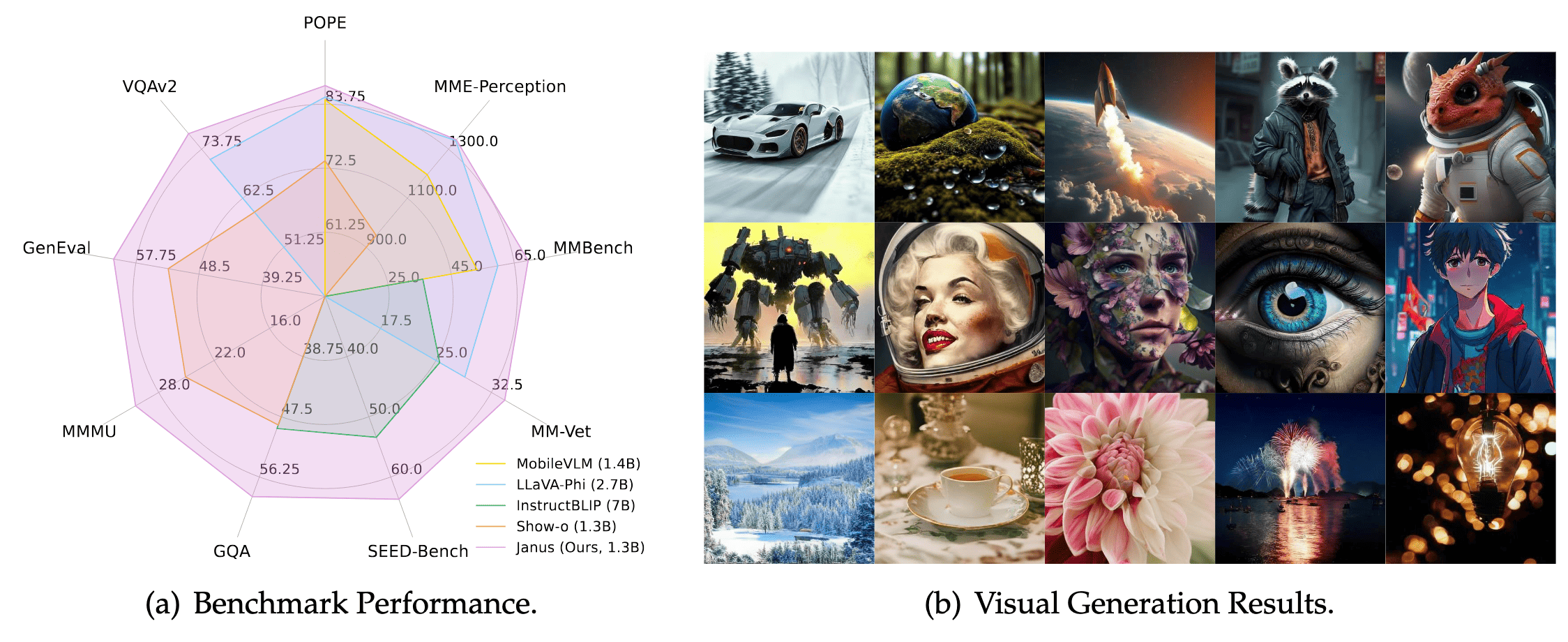Table of Contents
Overview
In the rapidly evolving world of artificial intelligence, multimodal models are becoming increasingly important. These models can understand and process information from various sources, such as text and images, opening up exciting new possibilities. Today, we’re diving into Janus, a series of advanced multimodal AI models developed by DeepSeek. This powerful suite offers specialized tools for reasoning, visual encoding, and unified generation, and the best part? It’s open-source! Let’s explore what Janus brings to the table.
Key Features
Janus boasts a range of impressive features that make it a contender in the multimodal AI space. Here’s a breakdown:
- Multimodal Input Handling: Janus is designed to seamlessly process both visual and textual data, allowing it to understand complex information from multiple sources.
- Advanced Visual Encoding: The models excel at extracting meaningful information from images, enabling them to interpret visual content effectively.
- Janus-Pro for Complex Reasoning: This specialized variant is designed for tasks requiring advanced reasoning capabilities, making it suitable for complex problem-solving.
- JanusFlow with Autoregression and Rectified Flow: JanusFlow integrates autoregressive and flow-based approaches to enable fluent and coherent output generation, resulting in more natural and engaging interactions.
- Open-Source Models on GitHub: The models are available on GitHub, making them accessible to researchers, developers, and anyone interested in exploring multimodal AI.
How It Works
The Janus series leverages a sophisticated architecture to achieve its multimodal capabilities. Each model variant is trained on a diverse dataset of both visual and textual data. Janus employs decoupled visual encoding to effectively process images, while Janus-Pro is specifically engineered for reasoning tasks. JanusFlow takes a unique approach by integrating autoregressive and flow-based methods. This combination allows it to generate fluent and coherent outputs, bridging the gap between understanding and expression.
Use Cases
The versatility of Janus opens up a wide array of potential applications. Here are a few key use cases:
- Visual Question Answering: Janus can answer questions based on the content of an image, providing insightful responses to visual queries.
- Multimodal Dialogue Systems: By understanding both text and images, Janus can power more engaging and context-aware dialogue systems.
- AI-Assisted Education Tools: Janus can be integrated into educational platforms to provide visual explanations and interactive learning experiences.
- Content Generation Combining Image and Text: Janus can be used to generate creative content that seamlessly blends images and text, such as social media posts or marketing materials.
Pros & Cons
Like any AI tool, Janus has its strengths and weaknesses. Let’s weigh the advantages and disadvantages:
Advantages
- Strong Multimodal Capabilities: Janus excels at processing and understanding information from both visual and textual sources.
- Open-Source and Accessible: The open-source nature of Janus makes it readily available for research, development, and experimentation.
- Specialized Model Variants for Different Needs: The Janus series offers specialized models, such as Janus-Pro and JanusFlow, tailored for specific tasks.
Disadvantages
- May Require High Computational Resources: Training and running Janus models may require significant computational power.
- Less Support Than Commercial Offerings: As an open-source project, Janus may have less dedicated support compared to commercial AI solutions.
How Does It Compare?
When evaluating Janus, it’s important to consider its position in the competitive landscape. A key competitor is GPT-4V, which is more widely adopted but not open-source. Another notable competitor is Flamingo from DeepMind, which is powerful but has limited public access. Janus distinguishes itself by offering a strong combination of multimodal capabilities and open-source accessibility.
Final Thoughts
Janus represents a significant step forward in the field of multimodal AI. Its open-source nature, specialized model variants, and strong performance make it a valuable tool for researchers, developers, and anyone interested in exploring the potential of AI that can understand both text and images. While it may require more computational resources and community support than commercial alternatives, its accessibility and flexibility make it a compelling option for a wide range of applications.

